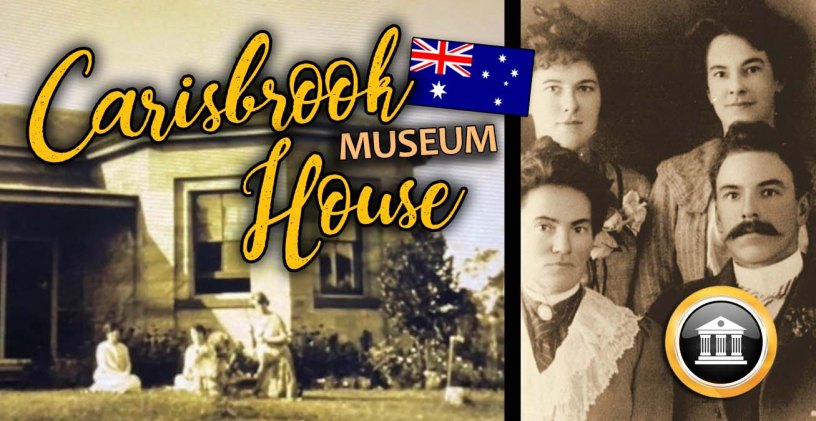https://www.carisbrookhouse.com/
Carisbrook House is a quaint middle class cottage built in 1880 with local quarried sandstone, it sits overlooking Burns Bay in a beautiful location
As you enter the courtyard and gardens, it was once and open space fenced to the west with a picket fence along the roadside with fruit trees and garden
The courtyard was built around 1959 and the Brooks family gravestone was moved from North Sydney cemetery when the excavations for Warringah Freeway began
Carisbrook House Museum
0434 757 300
https://maps.app.goo.gl/dEJkSBZ8i3qM2jyX9?g_st=ic

Enter via the lft hand side if coming from Victoria Rd side and cross over Burn Bay Road and right at the first roundabout
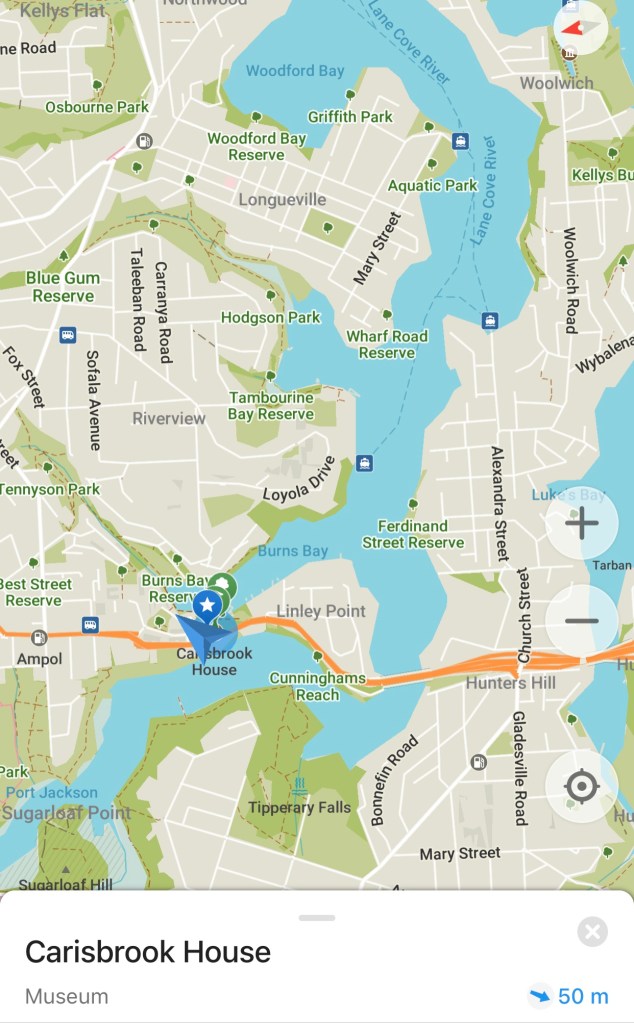

Great location near the water, it is urrounded by igh rise apartments now in that area and right next to busy Burns Bay Rd
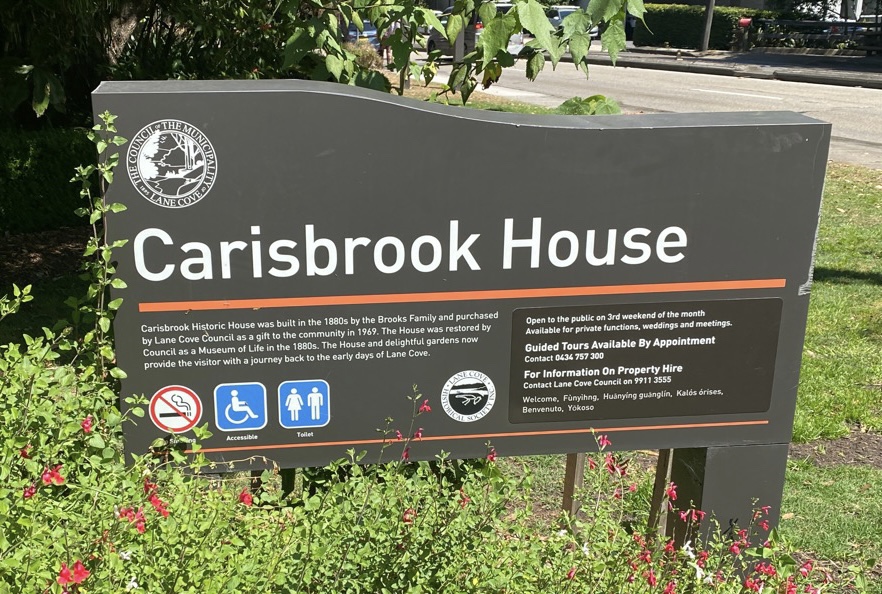
A survivor of a time when land around the Lane Cove River was a world away from Sydney Town!
Parking available right out from of the museum

The Brooks family built Carisbrook on land owned by their family since the 1850s. It remains the oldest surviving house in the area
It is of Italianate style, a very fashionable architectural style of the Victorian period
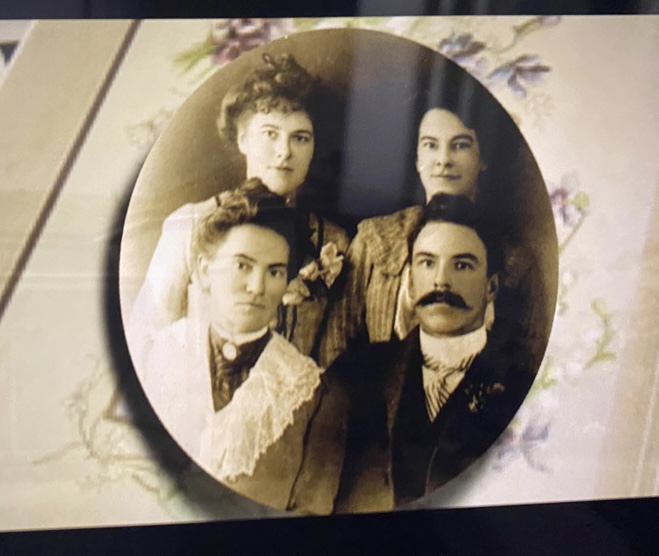
The Brooks Family
Charles and Mariam Brooks and their children moved into their remote north side home – the easiest way to get to Carisbrook at the time was by boat from Circular Quay to Hunters Hill and from ther a row boat across to their private wharf

THE BEDROOM
1880s cast iron double bed was considered the utmost in ‘modern technology’ that it was hygienic and could be scrubbed free of those newly discovered things-‘germs’.
Most mattresses were stuffed with curled horsehair, wool or kapok. However, the Hobart Town Courier of 21 Sep 1838 (p.3) mentions “spring stuffed mattresses”.

Other upholsters advertise that they can put springs into sofas and chairs that were not sprung. The Sydney Herald, 17 Nov 1836 (p.3) advertised ‘mattress springs’ for auction
The crocheted bedspread was a very popular design from 1860s to the first few decades of the 20th century. Made from cotton thread with knitted frill
The quilt, made up of hundreds of suffolk puffs’ was hand made by an American woman married to an Australia. The couple lived in Greenwich until they returned to America–whereupon she presented her mother-in-law with the quilt
It was gifted to Carisbrook by the grandniece of the maker

Without antibiotics, an ‘Improved inhaler’ was one way to clear the lungs and sinuses of congestion
Eucalyptus oil or camphor were the remedies
VicksVapor rub was yet to be invented!
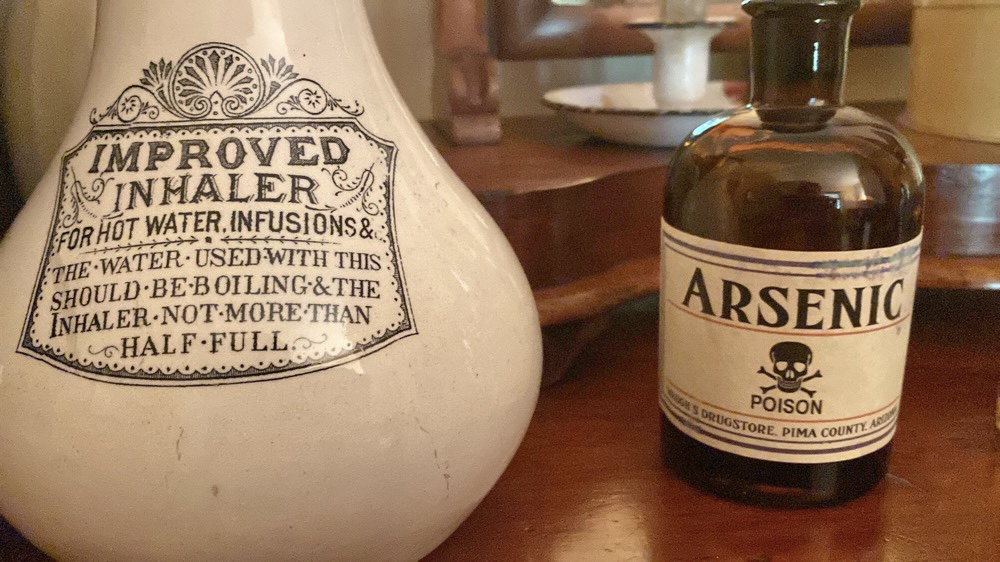
A medical book provided recipes for tinctures and drafts and the ingredients were often tiny amounts of arsenic, strychnine, morphine or cocaine.
Cannabis was a known remedy for asthma in the late 1800s
There was a washstand in the corner
Hot water came in the jug from the water urn heating on the cast iron stove in the kitchen, and washing, shaving and teeth cleaning were all done in the bedroom before dressing
THE LIVING ROOM
At the front of the house was the living room which was spacious and full of cheerful colours and lit with natural light
The fireplace was not only to keep the family warm, it was to show their wealth and status – the more things on the mantel the better!

On the mantel they also had “spills vase” which were rolled up pieces of paper to work as a wick which were used to light the fireplace
The sofa and chairs were from different periods – middle class families had passed down pieces or family herlooms
The 1850s walnut table could be folded and pushed to the side of the room

The green room just off the living room overlooking the gardens at the back towards the water
light streaming in and also giving extra light to the living room

This is one of Australia’s 2 oldest pianos made by Thomas Tomlinson of Soho London in 1830 – it was shipped to Sydney in a tin crate assembled at a music shop
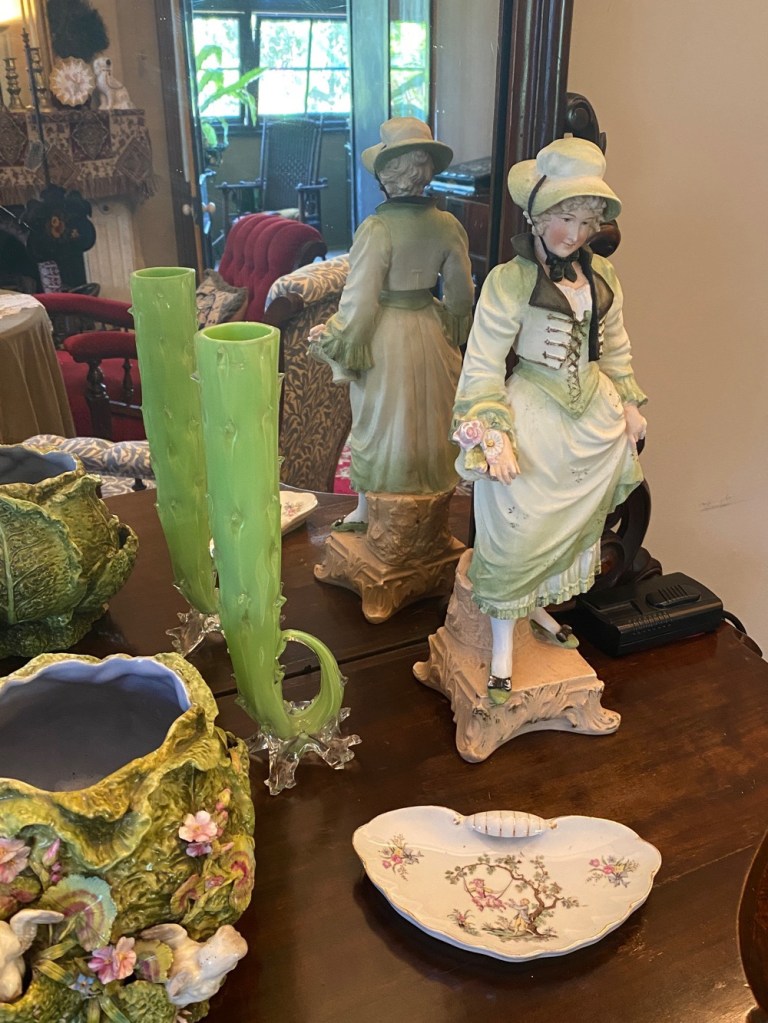
Victorians adorned their interiors with a wide variety of ornaments to match their status. – Some were turned out for the mass market, other more costly pieces, hand crafted
THE DINING ROOM

There were many rules when it came to dining – Eating had rules in the 1880s:
Children could not sit until told to do so, and only after Mother and Father had seated themselves. Nor could they begin to eat until Mother had taken her first bite.
Children could not speak until spoken to – Generally the saying went “Children should be seen, but not heard”
Elbows were kept OFF THE TABLE – A terrible sin!
Cutlery order was to work from the outside in. The soup spoon began on the outside right, with the dessert spoon on the inside right and dessert fork on the inside left
Soup was never spooned toward the eater, but the spoon was pushed to the outer side of the plate and sipped–no silver spoon entirely in the mouth here!
Peas were never scooped by the underside of the fork, but speared on the end of the upside using the knife as lever

The door in the room leads to what was once the Butlers Pantry
They kept the valuable house silver, tableware and the stock of wine for the day under lock and key here
It had a sink, where china and silver could be washed, and shelves on which the items were kept.
Even in homes without a butler, it was still called the butler’s pantry.
This room was converted to an en suite bathroom during World War II (1939 – 1945) – perhaps because blackout requirements made trips to the outside loo a bit of a challenge.
THE KITCHEN
The kitchen was at the back of the house with access from the verandar and was as bare and clean as could be to keep out animals like the ants in summer as well as rats so there were a few interesting contraptions here to do just that

The 1880s canisters kept tea, sugar etc
Covering shelves in paper (even newspaper) kept them clean-the paper was replaced a few times a year

The cast iron stove burned wood
The fire was lit in the morning and kept alive until bedtime
The pot stand next to the stove holds the rather heavy iron pots
Cooks needed muscles!

The 1880s Australian pine meat safe kept flies from the food. Standing the legs in saucers of water kept out crawling insects. The wire doors let the breeze keep the contents cool.
The portable metal meat safe would have been hung up in the shade of a tree.

Originally an open space fenced to the west with a picket fence along the roadside – used to have fruit trees and gardens.
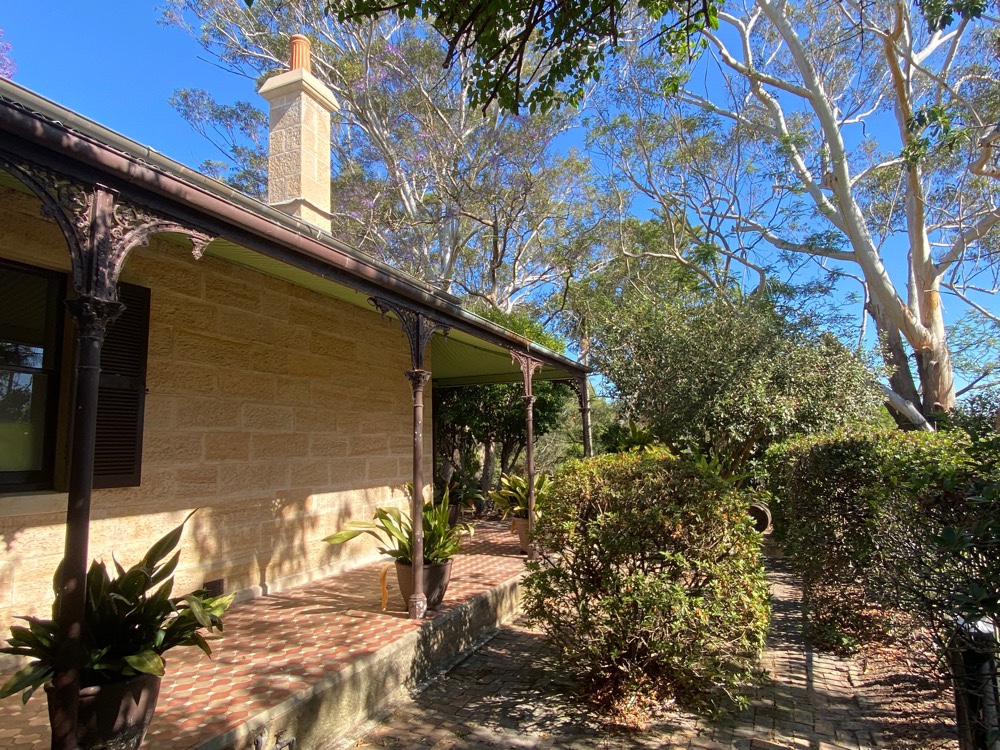
There were 4 verandahs around the house allowing for a shaded spot – the tiles are victorian and rescued from the demolished Sydney Arcade
A nice little hide out from the hustle and bustle of Sydney, the cafe and area around is nice place to sit and have a coffee and read a book – recommended for a half day to full day visit!

